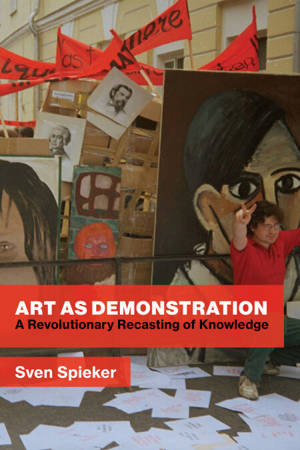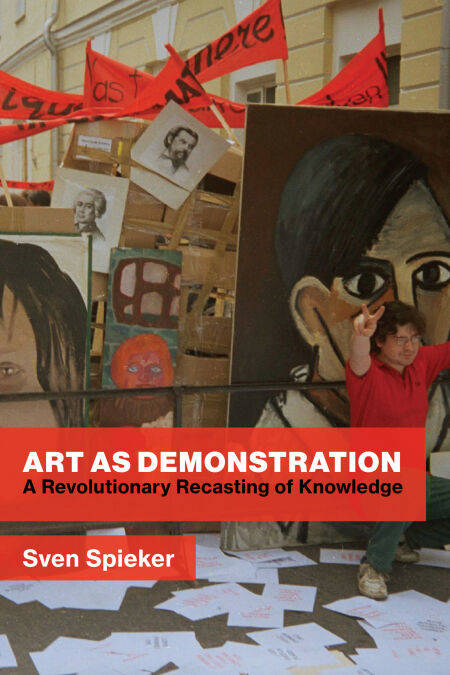
- Afhalen na 1 uur in een winkel met voorraad
- Gratis thuislevering in België vanaf € 30
- Ruim aanbod met 7 miljoen producten
- Afhalen na 1 uur in een winkel met voorraad
- Gratis thuislevering in België vanaf € 30
- Ruim aanbod met 7 miljoen producten
Zoeken
€ 34,49
+ 34 punten
Omschrijving
How artists wield demonstration to question the status quo both aesthetically and politically, marshaling art and education as powerful agents of change.
Demonstration, in short, says: See here. It is the practice of pointing to something in order to explain or contest it. As such, Sven Spieker argues that demonstration has helped reshape art from the height of the Cold War to the late twentieth century, reformatting our understanding of how art and political engagement relate to each other. Focusing on Western Europe (especially Germany), Eastern Europe, and the United States, Art as Demonstration expands on contemporary discussions of art-as-protest, activism, and resistance. Spieker shows how a closer, more historical look at art’s connection with demonstration reconnects us with earlier efforts, notably by the early twentieth-century avant-garde, to marshal art for the purpose of instruction and engagement.
Art as Demonstration reconceives the history of postwar art in Eastern and Western Europe from the perspective of demonstration, understood formally (as a technique for showing and pointing) as well as politically (as protest, resistance, etc.). Close analyses of individual artworks reveal how the deployment of demonstration has changed over time. Spieker shows how “protest” and “resistance” organize art and artists not only politically but also and especially formally and aesthetically—a development of particular importance in the Cold War art and politics of Eastern Europe. The book illustrates how from the 1960s onward demonstration radically changed the way artists thought about art: no longer as an object but as a form of education.
Demonstration, in short, says: See here. It is the practice of pointing to something in order to explain or contest it. As such, Sven Spieker argues that demonstration has helped reshape art from the height of the Cold War to the late twentieth century, reformatting our understanding of how art and political engagement relate to each other. Focusing on Western Europe (especially Germany), Eastern Europe, and the United States, Art as Demonstration expands on contemporary discussions of art-as-protest, activism, and resistance. Spieker shows how a closer, more historical look at art’s connection with demonstration reconnects us with earlier efforts, notably by the early twentieth-century avant-garde, to marshal art for the purpose of instruction and engagement.
Art as Demonstration reconceives the history of postwar art in Eastern and Western Europe from the perspective of demonstration, understood formally (as a technique for showing and pointing) as well as politically (as protest, resistance, etc.). Close analyses of individual artworks reveal how the deployment of demonstration has changed over time. Spieker shows how “protest” and “resistance” organize art and artists not only politically but also and especially formally and aesthetically—a development of particular importance in the Cold War art and politics of Eastern Europe. The book illustrates how from the 1960s onward demonstration radically changed the way artists thought about art: no longer as an object but as a form of education.
Specificaties
Betrokkenen
- Auteur(s):
- Uitgeverij:
Inhoud
- Aantal bladzijden:
- 360
- Taal:
- Engels
Eigenschappen
- Productcode (EAN):
- 9780262377553
- Verschijningsdatum:
- 5/02/2024
- Uitvoering:
- E-book
- Beveiligd met:
- Adobe DRM
- Formaat:
- ePub

Alleen bij Standaard Boekhandel
+ 34 punten op je klantenkaart van Standaard Boekhandel
Beoordelingen
We publiceren alleen reviews die voldoen aan de voorwaarden voor reviews. Bekijk onze voorwaarden voor reviews.








